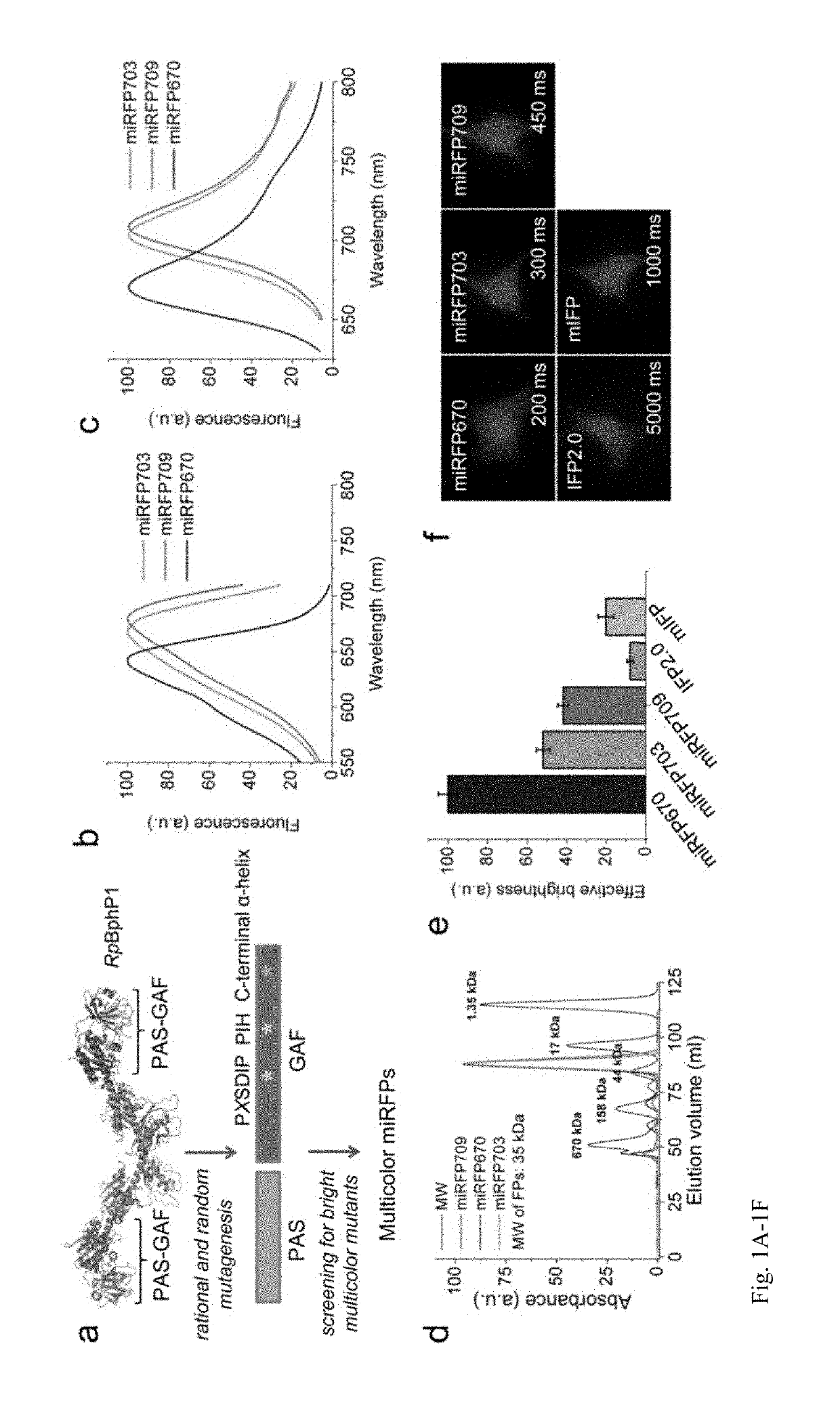Monomeric near-infrared fluorescent proteins engineered from bacterial phytochromes and methods for making same
a technology of phytochrome and near-infrared light, which is applied in the field of monomeric near-infrared light fluorescent proteins engineered from bacterial phytochromes and methods for making same, can solve the problems of limiting the use of nir light fluorescent proteins in animal monitoring of active cellular processes, affecting the development of active mr reporters and biosensors, and unable to be used to label proteins and build nir biosensors. , to achiev
- Summary
- Abstract
- Description
- Claims
- Application Information
AI Technical Summary
Benefits of technology
Problems solved by technology
Method used
Image
Examples
experimental details and examples
Introduction
[0205]Current BphP-based NIR FPs have limitations and cannot be used to label proteins and to build NIR biosensors. There are three characteristics of NIR FPs, which are crucial to consider for their applications (1). The first one is an effective brightness of NIR FP in mammalian cells, which depends on its molecular brightness, intracellular stability, efficiency of BV incorporation, and cell expression level. In contrast to GFP-like FPs, the effective brightness of BphP-based NIR FPs does not always correlate with their molecular brightness (1). Decreased cellular fluorescence of some NIR FPs results from a low specificity of BV binding and a competition between BV and other heme-derived compounds, including protoporphyrin IX, for binding to NIR FP apoproteins (13, 14). The second characteristic to consider is an oligomeric state of FPs. Only monomeric FPs can be used in protein fusions without interference with functionality of the tagged protein partner (15). The th...
PUM
| Property | Measurement | Unit |
|---|---|---|
| concentrations | aaaaa | aaaaa |
| molecular weight | aaaaa | aaaaa |
| molecular weight | aaaaa | aaaaa |
Abstract
Description
Claims
Application Information
 Login to View More
Login to View More - R&D
- Intellectual Property
- Life Sciences
- Materials
- Tech Scout
- Unparalleled Data Quality
- Higher Quality Content
- 60% Fewer Hallucinations
Browse by: Latest US Patents, China's latest patents, Technical Efficacy Thesaurus, Application Domain, Technology Topic, Popular Technical Reports.
© 2025 PatSnap. All rights reserved.Legal|Privacy policy|Modern Slavery Act Transparency Statement|Sitemap|About US| Contact US: help@patsnap.com



